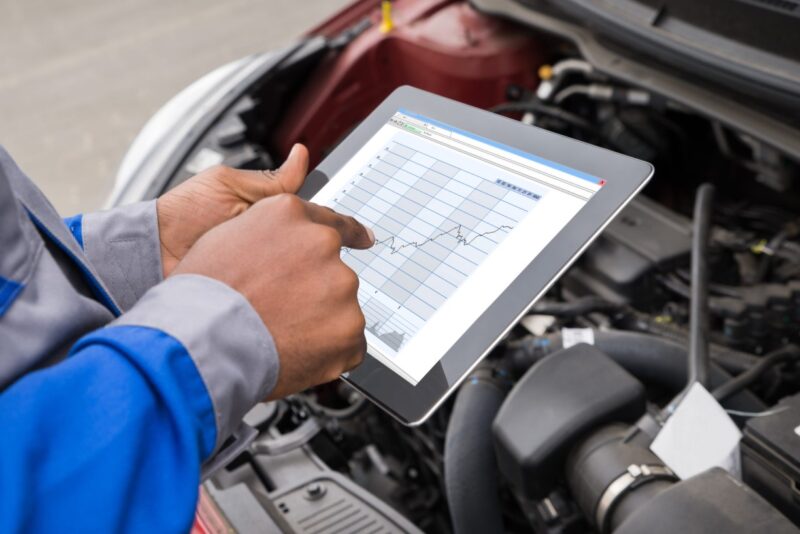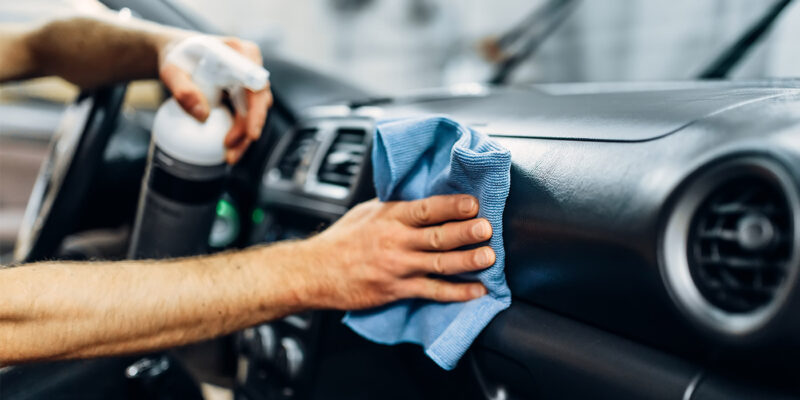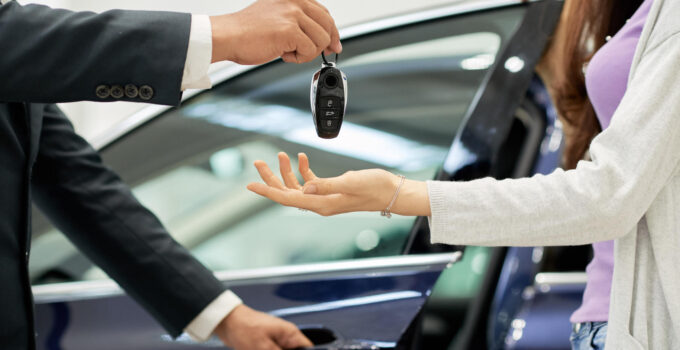Buying a secondhand vehicle can feel like you’re rolling the dice. The paint might shine, the tires might gleam, but trouble could be hiding under that polished surface. Let’s arm you with the tools and tricks to spot the issues before they become your problem.
Key Points
- Inspect for mismatched paint or body panels.
- Check tire wear for alignment issues.
- Look for leaks under the car.
- Examine the interior for unusual wear.
- Test the electronics and controls.
1. Start With the Exterior
The exterior gives away more secrets than you’d think. Start by looking closely at the paint. Consistency is key—if one door looks shinier or slightly different in shade, it could have been replaced or repainted after a collision. Run your fingers along the edges of the panels. Rough spots might indicate a sloppy touch-up job.
Take note of the gaps between panels. Are they even on both sides? Misaligned panels often hint at repairs, sometimes after significant damage.
Key Points to Check on the Exterior:
- Look for dents, dings, or uneven paint.
- Inspect panel gaps for alignment problems.
- Check the underside of doors and wheel arches for rust.
- Rust is another critical area. Surface rust can be sanded and repainted, but rust on structural components like the frame is a much bigger deal.

Source: reddit.com
2. Give It a Walkaround Test
Walking around the car might sound simple, but it’s a must. Use daylight to your advantage—dim lighting hides scratches and dents. Crouch down at the front and back of the car to get a straight-line view of the body. Any irregularities will stand out at this angle.
Focus on These Areas:
- Tires ─ Uneven wear patterns could signal alignment or suspension issues. If the inside edge of a tire looks more worn than the rest, it’s a red flag.
- Headlights and taillights ─ Look for condensation inside the lights, as this might suggest a seal failure or water damage.
- Windows ─ Scratches, chips, or cracks could lead to costly replacements.
Take your time with the walkaround—you’ll be surprised how much you can spot with a careful eye.
3. Peek Underneath
Don’t forget to get your hands dirty. Grab a flashlight, kneel down, and check the undercarriage. Any leaks under the vehicle could spell trouble. Oil, transmission fluid, or coolant puddles are all bad signs.
Rust under the chassis is another area to inspect carefully. If the rust looks flaky or deep, it could weaken critical structural points. Even if the seller says, “It’s just surface rust,” double-check.
Checklist for the Undercarriage:
- Look for wet spots or grease marks that signal leaks.
- Check for excessive rust or corrosion on the frame.
- Inspect the exhaust system for cracks or hanging parts.

Source: chevinfleet.com
4. Check Vehicle History
An important step in the car buying process is reviewing a detailed history report associated with the vehicle. To do this, you can try a car check for free, and upgrade to a full history report for a small fee of £9.99. This will reveal information such as the number of keepers, if the car is on finance, and much more.
What a Vehicle History Report Can Tell You:
- Accident records ─ Check if it’s been in a collision and what kind of damage occurred.
- Odometer readings ─ Look for inconsistencies that might suggest tampering.
- Insurance claims ─ Large claims often indicate significant repairs.
- Spending a little on a history report can save you from a world of trouble.
5. Interior Clues to Spot
A quick glance at the interior can reveal a lot. Look at the seats, pedals, and steering wheel. If they show more wear than the mileage suggests, it could mean the car’s odometer has been rolled back.
Water damage warning signs:
- Musty odors inside the cabin.
- Damp or wet spots under the mats.
- Rusty bolts under the seats.
Don’t overlook the small things. Test every switch, button, and lever. Non-functioning electronics might seem minor but could point to bigger electrical issues lurking beneath the surface.

Source: carwash.com
6. Test the Engine and Fluids
The engine bay is where the serious business happens. Start by checking the fluids:
- Oil ─ It should be clear and golden, not dark or gritty. Milky oil might mean water contamination, possibly from a blown head gasket.
- Coolant ─ The reservoir should show a bright, clean color. Sludge in the coolant tank is a warning sign.
- Brake fluid ─ Low or dirty fluid can affect braking performance.
Start the engine and listen. It should run smoothly without knocking or rattling sounds. Strange noises might point to wear and tear that will cost you later.
7. Take It for a Spin
The test drive is where you’ll find out if the car’s issues go beyond the surface. Pay close attention to how it feels on the road.
Key areas to evaluate:
- Brakes ─ Does the pedal feel firm? Does the car stop straight without pulling to one side?
- Steering ─ Is it responsive, or does the wheel feel loose?
- Transmission ─ Automatic or manual, gear changes should be smooth and quiet.
Listen for noises—squeaks, rattles, or grinding can signal underlying problems.
FAQs

Source: capitalone.com
1. Can a shiny car have hidden issues?
Yes, even a polished exterior can hide major mechanical or structural problems.
2. Should I worry about slight rust?
Surface rust isn’t always a dealbreaker, but deep corrosion on critical parts is.
3. How do I spot odometer fraud?
Check for excessive wear on the steering wheel, pedals, and seats compared to the mileage.
4. What noises during a test drive are red flags?
Knocking, squealing brakes, or grinding gears suggest underlying mechanical issues.
5. Is a history check really necessary?
Absolutely. It reveals past accidents, claims, and potential title problems.
Final Thoughts
Every used car tells a story—you just have to know how to read it. Take your time, do your research, and trust your instincts. If something doesn’t feel right, it’s okay to walk away. With a bit of patience and attention to detail, you’ll find a car that’s worth your money and peace of mind.




